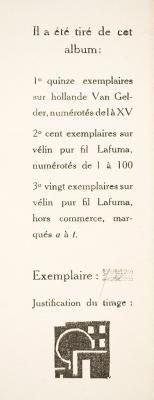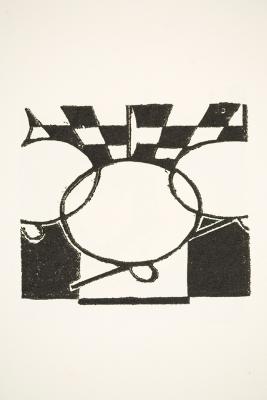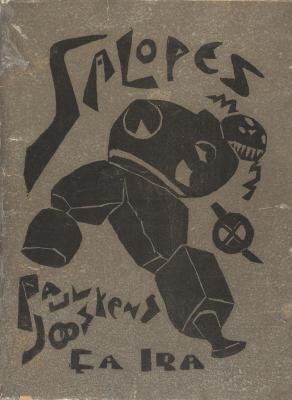From the ranks of the French-language, Antwerp publication Lumière (1919 - 1923), one of the first publications that gives attention to modern artistic movements in Belgium, comes the Dadaist-inspired monthly paper Ça Ira! (Revue mensuelle d’art et de critique (1920 - 1923)). Under the direction of Maurice van Essche, along with the most important colleagues Georges Marlier and Paul Neuhuys, it places a great deal of attention on the expressive arts. With covers and plates by the hand of Paul Joostens, Jan Cockx, Floris Jespers, Karel Maes, Pierre Flouquet and Jozef Peeters, among others, the paper provides a forum for a young generation of artists.
Under the influence of the international Dada movement, the paper promotes the cultural revolution and the rejection of the bourgeois values. People carry ‘Openness’ high on the banner, which leads to an eclectic choice and the defences of many forms of avant-garde art. Thus Ça Ira! publishes in 1921 De Stijl’s Manifest II by Theo Van Doesburg (1883 - 1931) as well as Clément Pansaers’ (1885 - 1922) thematic number Dada: Sa naissance, sa vie, sa mort. Important for the evolution of provocateur Paul Joostens is the publication of Salopes, le quart d’heure de rage ou soleil sans chapeau, by which he demonstrates himself as a Dadaist writer in addition to being a painter.
Beginning with the second series (no.’s 13 to 20), the attention shifts from the societal questions to pure art critique with an explicit emphasis on Dadaism. The Antwerp abstract artists, who in the beginning find an association with the progressive task of the Flemish movement, join their social engagement with the humanitarian-expressionistic paper Ruimte (1920 - 1921) and the originally Flemish-leaning art publication Het Overzicht (1921 - 1925).
Ça Ira! appears from April 1920 until January 1923, after which it continues on as a publishing foundation and art circle with lectures and exhibitions by which the most important in the Royal Art Association takes place. Collaboration with members of Ça Ira!, Créer and Signaux de France result in a joining of forces in the long-running Sélection (1920 - 1927), in which the Flemish Expressionism gains a forum under the supervision of the promoters and critics Paul Gustave Van Hecke and André De Ridder.
Sergio Servellón
CC-BY-NC (Creative Commons 4.0)





